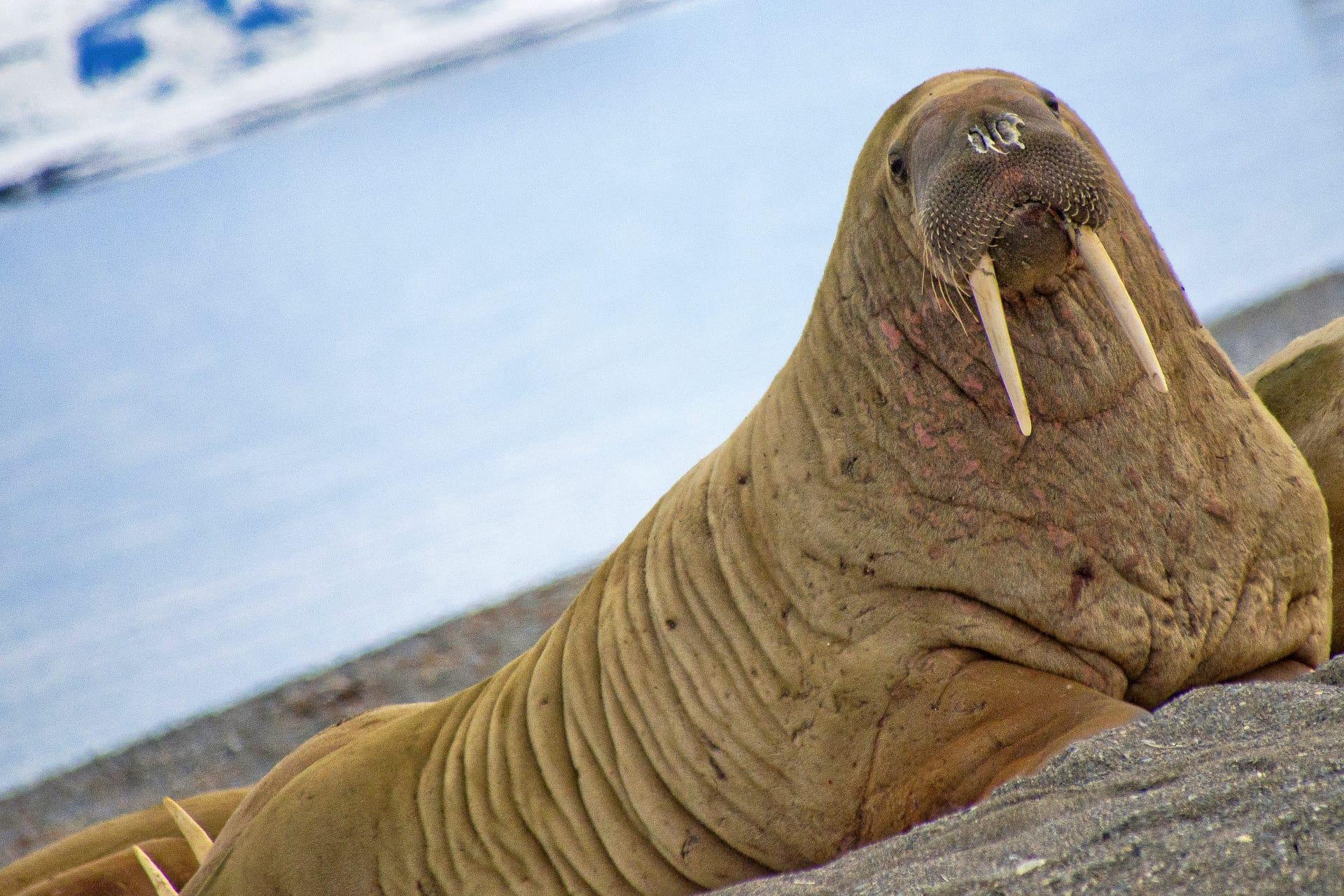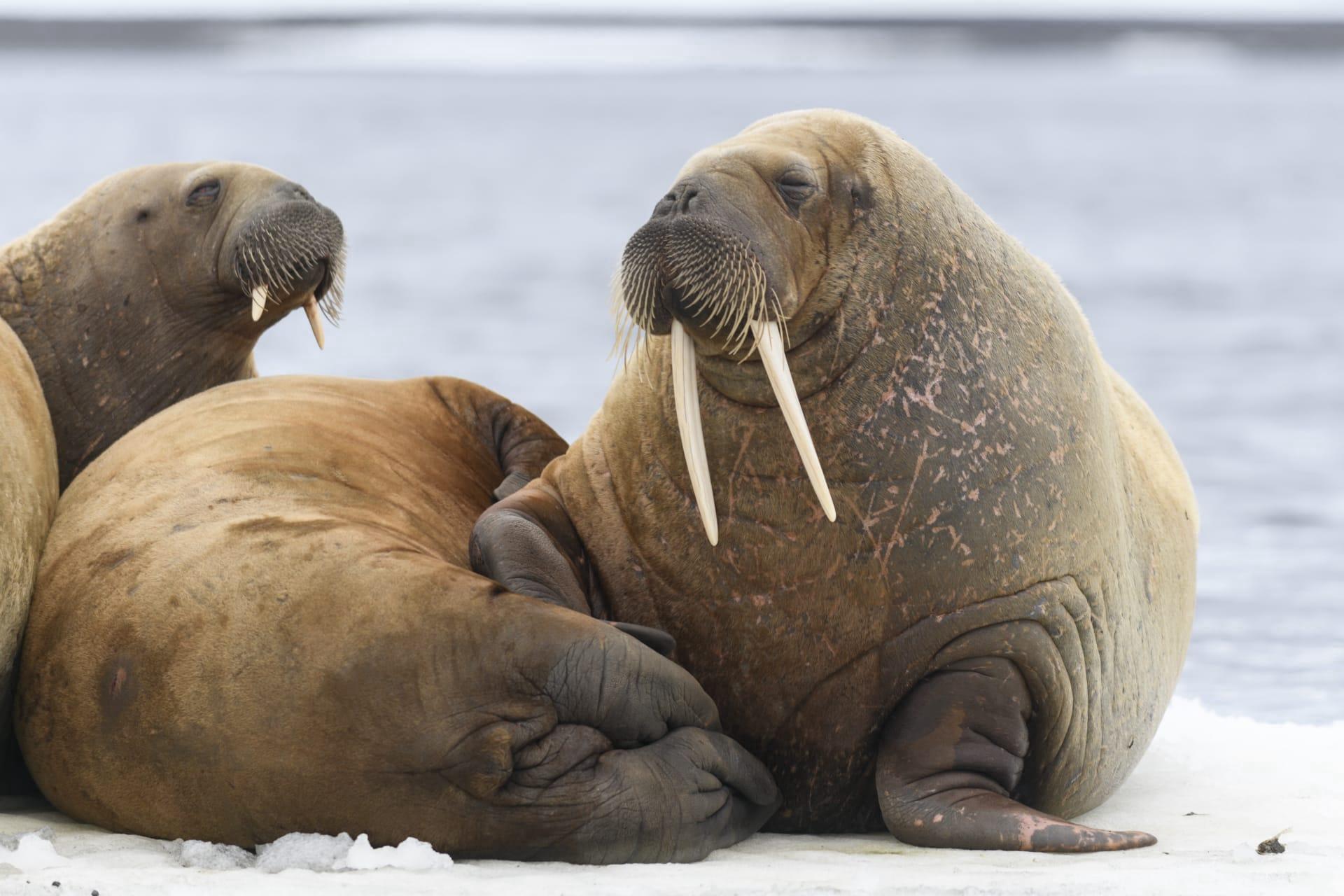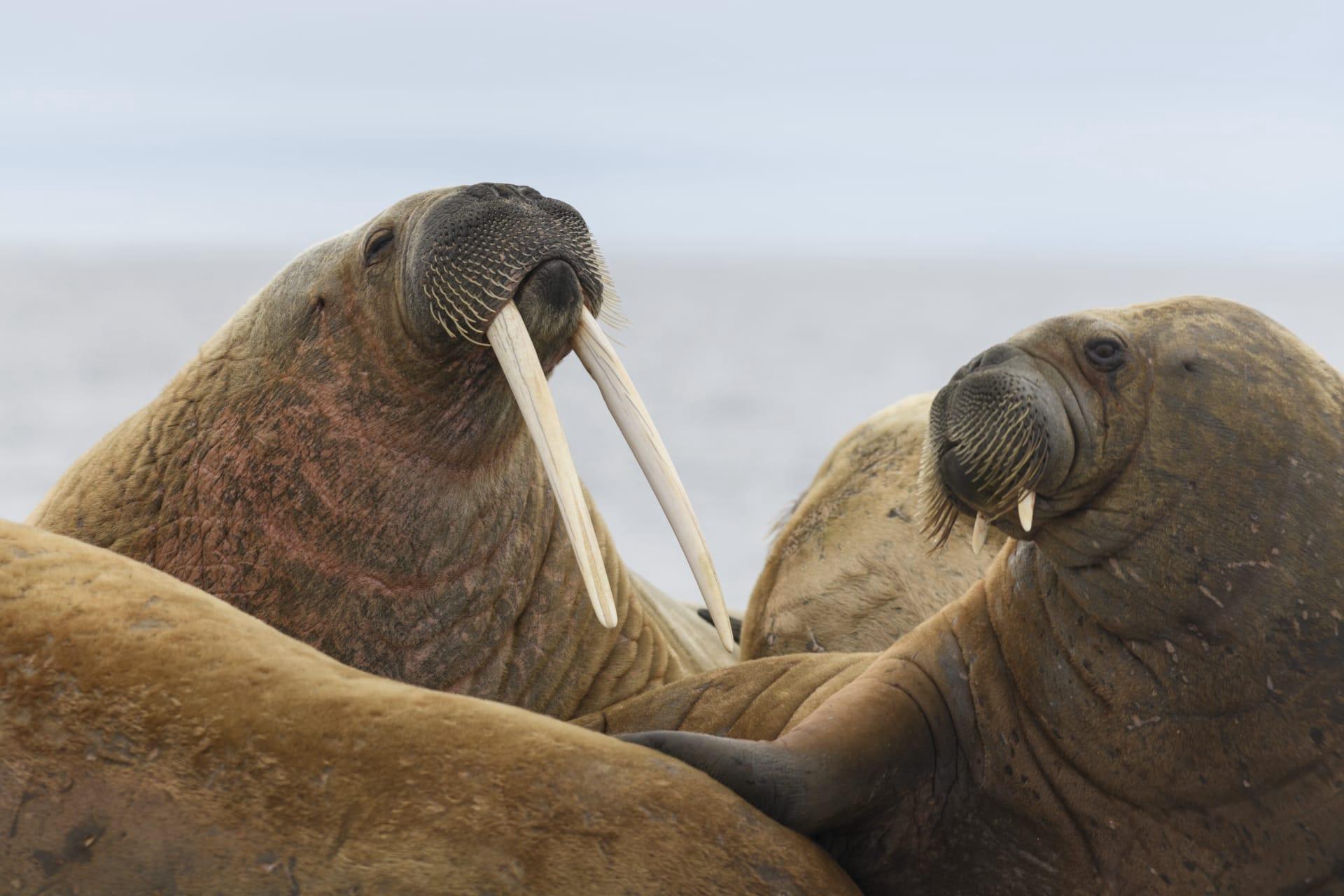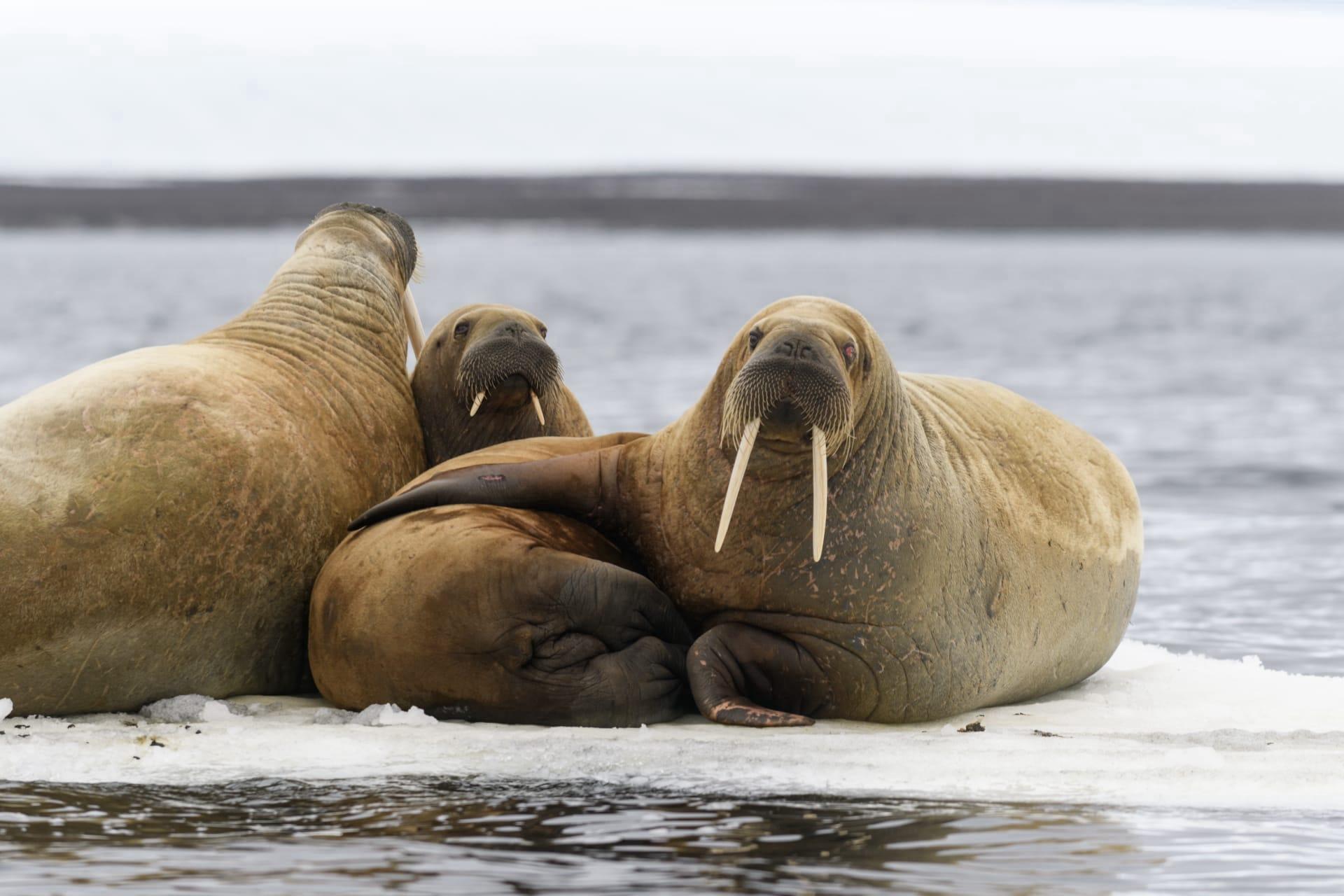Walrus Characteristics
- Home /
- Mini Encyclopedia /
- Animal /
- Walrus Characteristics
1
Walruses, those large marine mammals, are truly fascinating creatures. Adult males, known as bulls, can grow up to 12 feet in length and weigh about 1,500 to 1,700 kilograms, while females, called cows, are a bit smaller, usually measuring up to 10 feet and weighing around 800 to 1,250 kilograms. These hefty animals can live up to 40 years in the wild, showcasing their robustness and endurance in the harsh marine environment.
One of the most distinctive features of a walrus is its tusks. These long, ivory canines can grow up to 3 feet in males and are slightly shorter in females. The tusks play various roles: they are used in social interactions, particularly in establishing dominance among males. They also assist in hauling their massive bodies out of icy waters onto land or ice floes. Moreover, these tusks are handy tools in scraping up food from the ocean floor, aiding in their search for clams, their primary diet.

2
Question: Why do walruses have whiskers?
Answer: Walruses have a set of stiff whiskers, known scientifically as vibrissae, on their snouts. These are not just for show; they serve a critical function. Each walrus has about 600 to 700 of these whiskers, which can reach up to a foot in length. These vibrissae are highly sensitive and help the walrus detect the presence of food on the murky ocean floor. As they forage, these whiskers can detect the slight movements of clams and other prey in the sediment, making them efficient hunters in their cloudy, underwater world.

3
Walruses are not just bulky animals; they are also quite adept in water. Their large flippers enable them to swim at speeds of up to 35 kilometers per hour when necessary, though they typically prefer a leisurely pace of around 4 to 6 kilometers per hour. On land, they move more clumsily, but they can still manage to cover ground when needed.
When it comes to hunting, walruses mainly rely on their sense of touch and the sensitive whiskers to locate prey. They feed primarily on benthic bivalve mollusks like clams, which they suck from their shells with their powerful lips. These marine mammals can dive to depths of about 80 to 100 meters and can stay underwater for up to 30 minutes, scouring the ocean floor for food.

4
Walruses inhabit the cold waters and ice floes of the Arctic Ocean and the subarctic seas of the Northern Hemisphere. They are particularly fond of the shallow waters above the continental shelves, where they can easily access food sources. These animals are highly dependent on sea ice for their various life processes, including breeding, birthing, and resting.
The breeding season of walruses occurs from January to March. During this time, males engage in vocal and physical displays to attract females. After a gestation period of about 15 to 16 months, a single calf is born, usually on sea ice. The calf is dependent on its mother for food and protection for the first two years of its life, learning crucial survival skills during this period.

5
Book: "The Walrus: Giant of the Arctic Ice" by Dr. Charles Taylor. Published in the USA, 1995. This book dives into the extraordinary world of the walrus, exploring their biology, behavior, and the challenges they face in the rapidly changing Arctic environment. Dr. Taylor combines scientific insights with engaging narratives, making it a compelling read for anyone fascinated by these magnificent creatures.
Book: "Walrus: A Life Under Ice" by Helen Pearson. Released in the UK in 2001. Pearson's book offers an intimate look into the life cycle of the walrus, from birth to maturity. It beautifully illustrates the walrus's unique adaptations to the Arctic habitat and discusses the impact of climate change on their survival. The author's vivid storytelling brings to life the struggles and triumphs of these marine mammals.